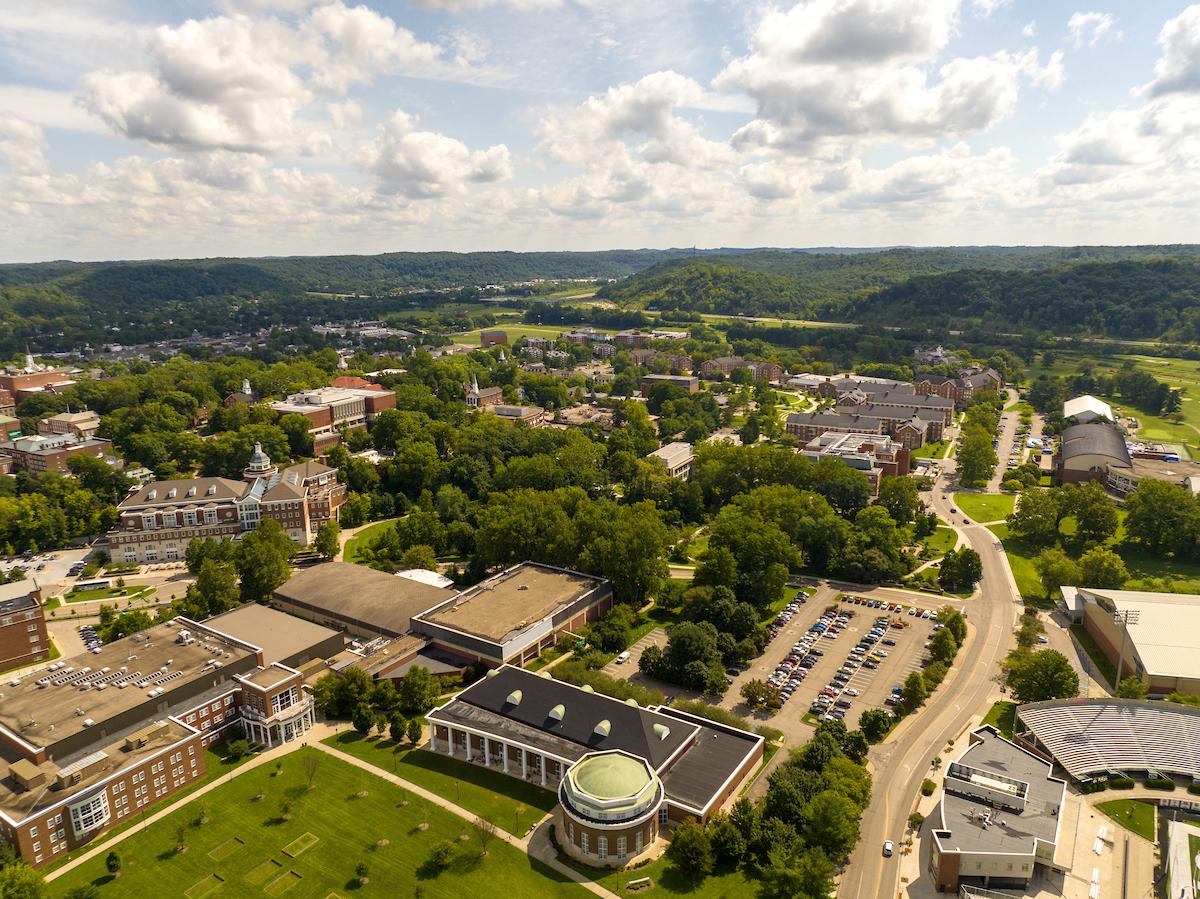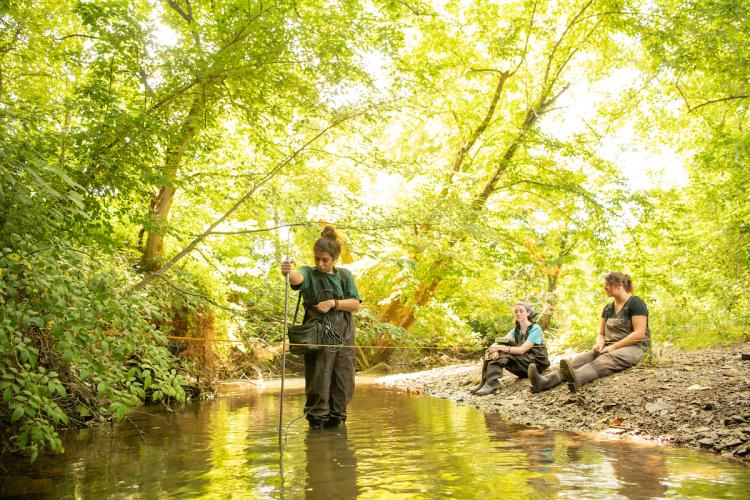
The efforts behind a greener Ohio University

Every day, students, faculty and staff work to make Ohio University a more climate-friendly place to live and learn.
From the Office of Sustainability facilitating the OHIO Sustainability and Climate Action Plan to the many colleges leading innovative research efforts, Ohio University is home to an abundance of programs that seek to benefit people and the planet.
Ohio University has been recognized for sustainability initiatives by The Washington Post and Time, plus other national and local media outlets. Read on to learn more about our sustainability impact.
Maintaining renewable facilities
Since 2009, Ohio University has been home to the largest in-vessel compost facility at any higher education institution in the nation. The Compost Facility allows the University to compost nearly 100 percent of food waste from campus dining halls and the central food facility.
In most dining halls, any leftover food is placed on a conveyor belt which moves it to a Culinary Services employee who separates the contents: food waste, landfill waste and recyclable waste. The food waste is then taken to the facility at The Ridges, where it takes approximately two weeks for material to pass through the system and then takes at least 90 days to cure in long outdoor piles called windrows.
The Compost Facility’s central function and sustainable design elements, including rainwater collection and use, renewable energy, daylighting and heating, enable the facility to be an educational model for students, faculty, staff and community members, according to Steve Mack, director of Facilities Management.
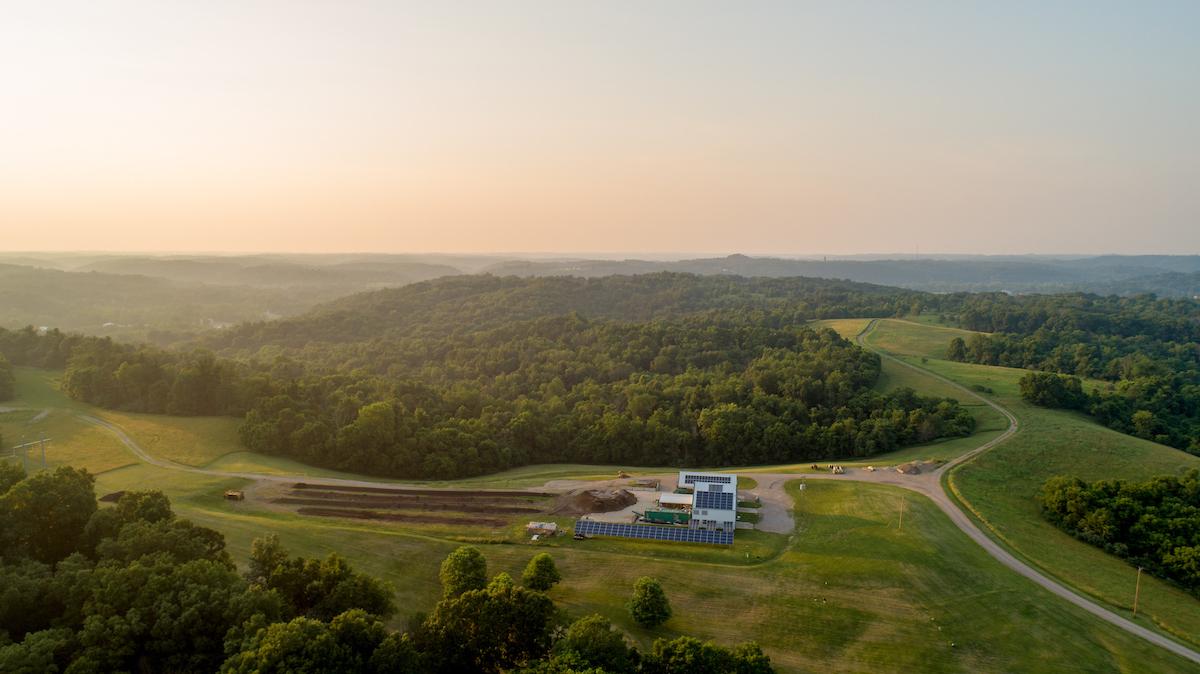
“Our composting operation has significantly reduced the amount of food waste that the University sends to the landfill,” Mack said. “By diverting that food waste, we avert potential greenhouse gas emissions and create a resource out of what was formerly a waste stream.”
Ohio University has a set goal of recycling 80 percent of all waste generated, which is monitored and maintained by Campus Recycling. There are 4,000 recycling units in residence halls, as well as containers throughout campus offices.
There is also a unique housing option for students wanting to decrease their carbon footprint. The OHIO Ecohouse offers students the opportunity to live a more sustainable life. The house includes a biomass furnace, compost bins, organic garden, Energy Star rated appliances, water conservation efforts with rainwater collections, solar panels, and more.
Undergraduate students eligible for off-campus housing and graduate students of any program can apply to live in the Ecohouse. Each resident will register for a one-credit seminar that allows them to engage in weekly discussions about sustainability and will take on at least one sustainable project each semester. These projects can vary from growing herbs and vegetables, pollinator habitat restoration, energy conservation, repurposing waste, and so on.
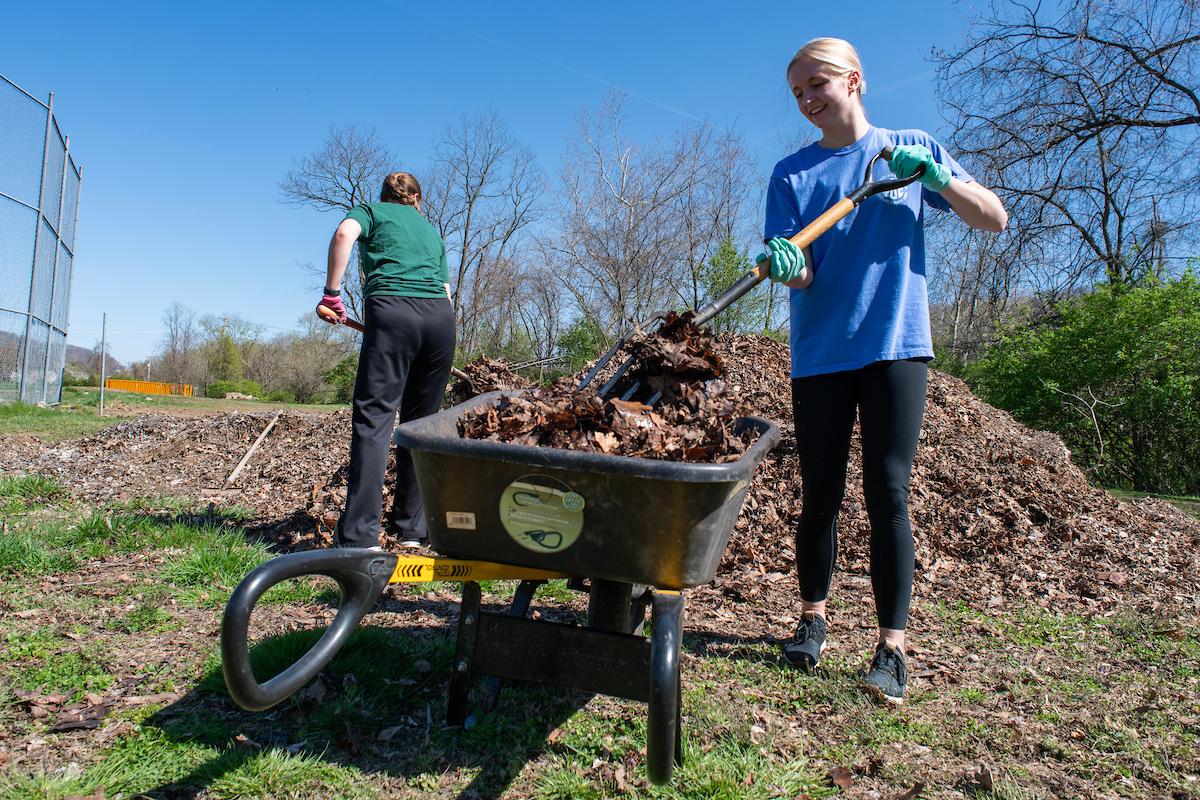
Bettering the planet through research
With 30 doctorate programs and 27 research-focused centers and institutes, Ohio University is making its mark on the world in multiple ways.
In 2022, Ohio University joined the highest level of research institutions in the country by receiving the R1 Classification (very high research activity) by Carnegie Classification of Institutes of Higher Education, commending the research efforts of OHIO’s faculty and students.
For over a decade, two Ohio University professors, along with Rural Action, have worked together to clean streams polluted by acid mine drainage and use the materials to produce paint pigments. The effort has been recognized nationwide.
Guy Riefler, Russ College of Engineering and Technology’s civil engineering chair and professor, and John Sabraw, College of Arts and Sciences’ painting and drawing chair and professor, along with their students, work to restore Sunday Creek, home to some of the worst acid mine drainage in the state.
True Pigments, a social enterprise, was launched by Rural Action driven by the two professors’ work. After the success of a small pilot facility, an industrial-scale acid mine drainage treatment and pigment producing facility will soon start construction at the Truetown Discharge site, in Millfield, Ohio, expanding on their work of environmental restoration.
Other Ohio University professors also look at renewable possibilities from coal. The Department of Energy recently awarded Ohio University’s Institute for Sustainable Energy and the Environment (ISEE) with two awards, with one exploring how coal waste can be used as energy storage.
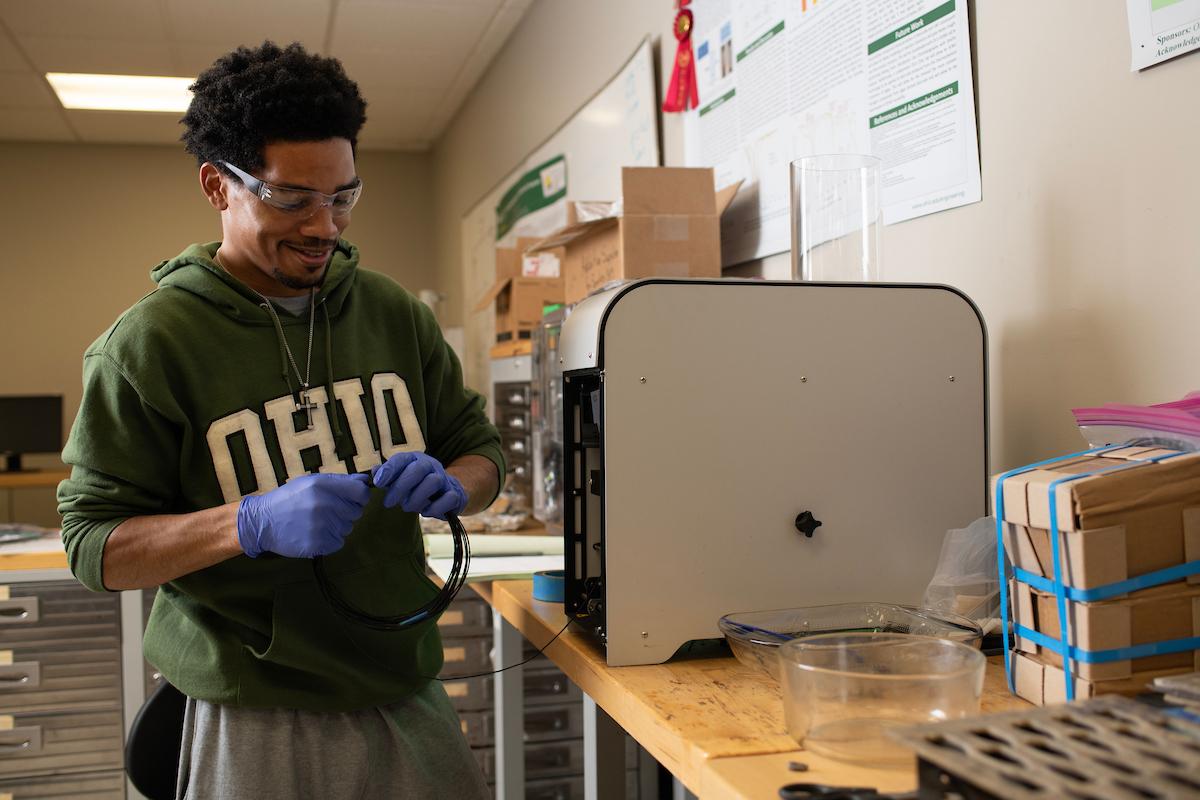
The project is led by John Staser, associate professor of chemical and biomolecular engineering, with support from Jason Trembly, professor of mechanical engineering and director of the ISEE, and Damilola Daramola, assistant professor of chemical and biomolecular engineering.
The study focuses on developing electrochemical processes to convert coal-based materials into two-dimensional carbon materials for supercapacitor applications, which are typically used for energy storage.
Over several years, Trembly and his team also developed technology to separate carbon from coal waste, which allows the capability to create renewable carbon-based building materials. In 2022, Trembly, along with Distinguished Professor of Physics and Astronomy David Drabold in the College of Arts and Sciences, and their doctoral students presented evidence for a new carbon solid, called “amorphous graphite,” that can be found in coal.
For decades, the Voinovich School of Leadership and Public Service has funded research projects in water quality, alternative energy sources, climate security, waste diversion and more.
Since 2010, the Voinovich School has partnered with several public and private entities, including the U.S. Department of Energy, to support the clean-up and reindustrialization of the former uranium enrichment facility near Piketon, Ohio, as part of the PORTSfuture Program. The program also includes public outreach and encourages local area students to learn more about STEM, and has engaged over 13,400 students as of 2020.
From bettering our local communities to advancing technology for future developments, Ohio University’s various faculty and student researchers are committed to benefiting the triple bottom line of sustainability: people, planet and prosperity.
Leading student climate action
From the environmental studies sustainability and resilience undergraduate certificate, to the environmental science and sustainability undergraduate major, and the online master of sustainability, security and resilience, there are environmentally focused academic opportunities at every level for Ohio University students.
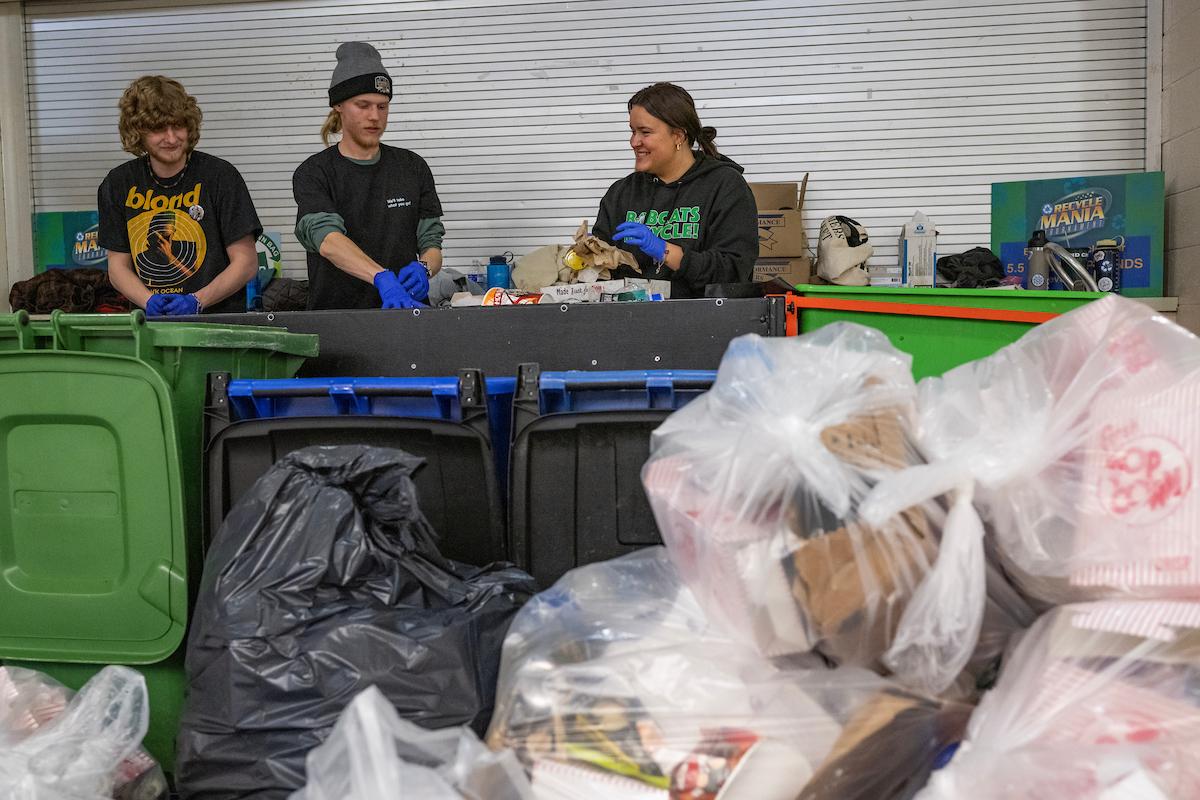
From biological sciences to energy engineering, students are majoring in programs that will help them lead in environmental areas across industries.
Regardless of academic program, plenty of extracurricular options are available for students to get involved in environmental efforts.
The Climate and Sustainability Ambassadors program was launched in 2019 by Dr. Ryan Fogt, professor of meteorology, as part of the Office of Sustainability Administration Hub. Throughout the academic year, the ambassadors take part in community and campus efforts to combat climate change.
“The group gives students, faculty, and staff with interests in climate action, sustainability, and environmental stewardship numerous opportunities to put their passions into tangible work that makes an impact on campus and beyond and to help the University achieve its new goals in the Sustainability and Climate Action Plan ahead of schedule,” Fogt said.
Students can also get involved with Campus Recycling, with annual donation events and campus and community efforts to reduce waste. The Voinovich School’s Appalachian Ohio Zero Waste Initiative seeks to improve environmental progress by increasing waste diversion rates.
Even if a student is not involved in the latest research or enrolled in an environmentally focused major, every person can make a difference by changing behaviors and attitudes surrounding sustainable efforts. Choices, no matter how small, can make an impact.
“There’s lots of ways to get involved for Ohio University students, staff, faculty and community members,” Sam Crowl, associate director of sustainability, said. “People should think about their community and how they would like to live. By caring about the environment, you care about your community. You care about one another. Hopefully by learning, from education, people start to see the economic sense of it too. There’s a lot we can do on an individual basis, and hopefully those lessons people learn – and the impact of those choices – last forever.”
